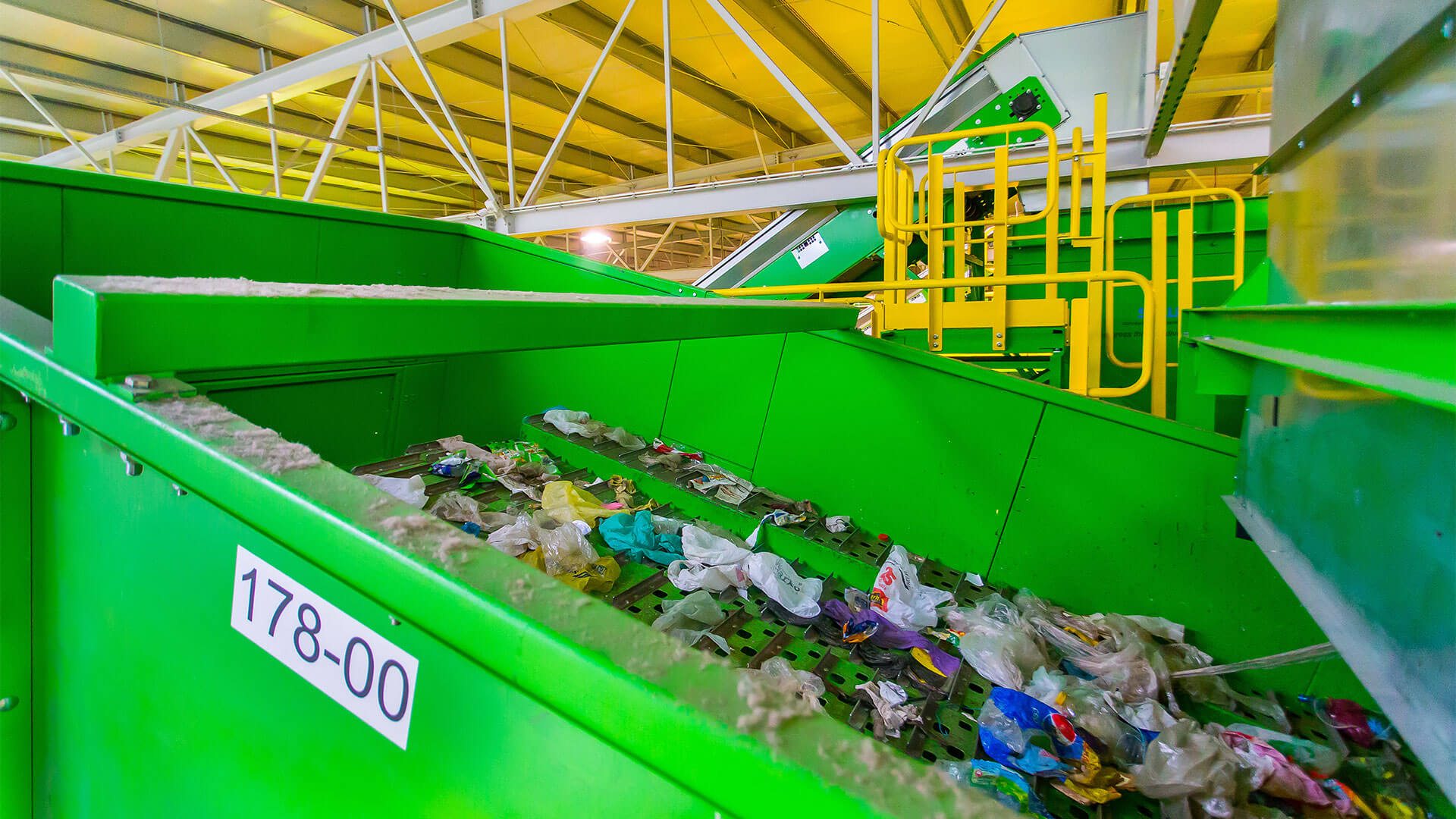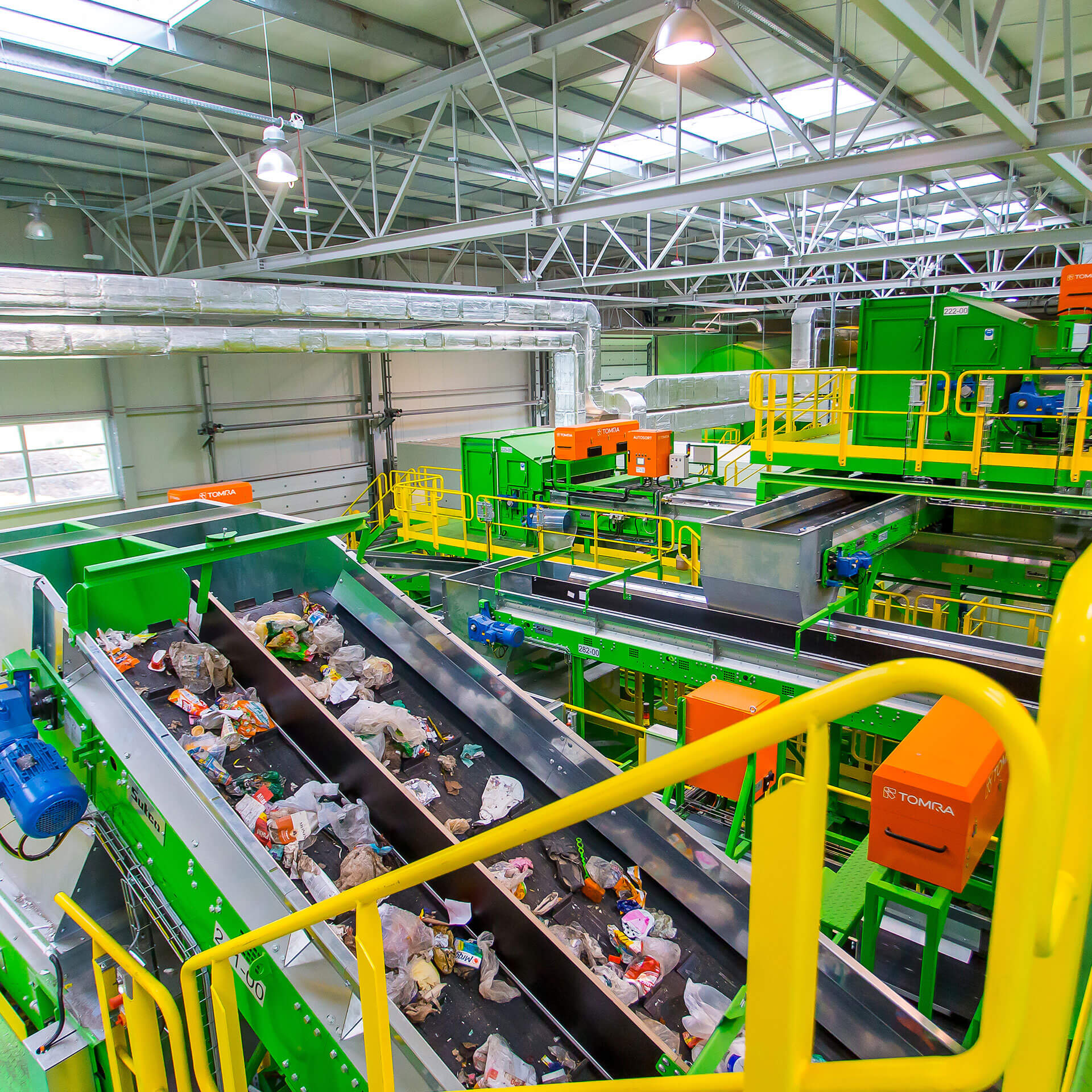
Municipal and solid waste, collected mixed and unsorted, contains a variety of different materials that can be recycled. In addition to organic waste, there are also many recyclable materials in the input. Municipal and solid waste has a variable density between 0.1 to 0.3 Mg/cubic metre. In order to create an economically interesting concept, it is important to obtain and take into account customer information regarding throughput capacity, waste composition and objectives. The bandwidth of a robust plant ranges from semi-automatic to fully automatic solutions. A high degree of flexibility as well as stability is required.
Roughly speaking, the process is as follows:
After the dosing feeder, the material is separated into different particle sizes via the screening drum and the ballistic separator (separation in 2D/3D). An air classifier is often used here to separate films. Magnetic separators and eddy current processes are also used to further equalise the material flows. The high output qualities are achieved by using NIRs (near infrared separators). After a manual or automatic quality control, the individual fractions are cleanly separated. An intelligent bunker management system collects the individual recyclables and compresses them for transport or storage or stores them in containers.
